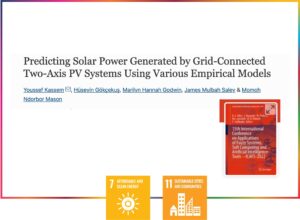
Researchers from Near East University, in collaboration with other experts, have conducted a study focusing on sustainable wastewater treatment. The study utilized Response Surface Methodology (RSM) and an Artificial Neural Network-based Genetic Algorithm (ANN-GA) to predict crucial output parameters—separation efficiency and oil flux—in membrane performance derived from experimental investigations.
The RSM model and ANN-GA were effectively employed to estimate optimum conditions for maximizing the output variables, demonstrating accurate descriptions of the membrane performance process. Notably, the ANN-GA approach revealed the best conditions for both responses, showcasing its efficacy in optimizing the treatment process.
In terms of statistical analysis, the RSM model for oil flux showed an estimated R² of 0.9916 and SEP of 3.54%, while the ANN model exhibited an R² of 0.9933 and SEP of 3.31%. For separation efficiency, the RSM model yielded R² = 0.9929 and SEP = 1.31%, whereas the ANN model achieved R² = 0.9961 and SEP = 0.99%. The sensitivity analysis indicated the order of significance of variables as oil concentration > feed pH > feed flow rate.
Relating the study to SDGs 7 and 11, which target affordable and clean energy, as well as sustainable cities and communities, the research contributes valuable insights for implementing sustainable wastewater treatment practices in diverse industries. The study acknowledges the increasing role of machine learning in addressing challenges in the oil and gas industry, aligning with SDG 7’s aim to ensure access to affordable, reliable, sustainable, and modern energy.
Addressing future work areas and limitations, the researchers emphasize the need for extended experimental studies, real-world industrial data, and scaling up the membrane treatment process to industrial levels. This comprehensive approach considers factors such as feasibility, cost-effectiveness, membrane fouling, and system maintenance, aligning with the broader goal of achieving sustainable development.
In conclusion, this collaborative research highlights the potential of innovative approaches in wastewater treatment, fostering progress towards the United Nations’ sustainable development agenda.
More Information:
https://link.springer.com/chapter/10.1007/978-3-031-25252-5_30